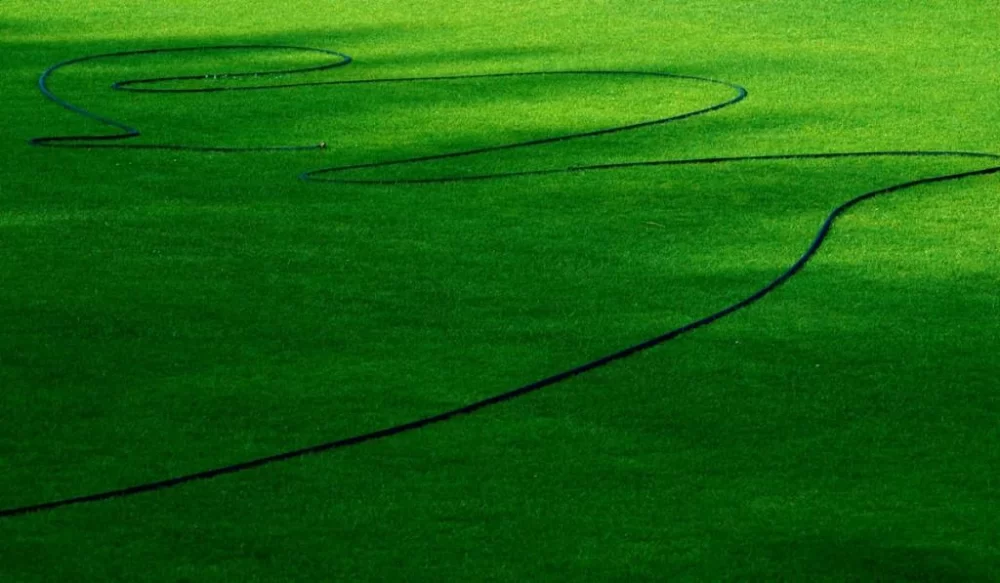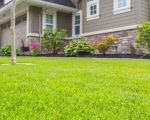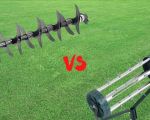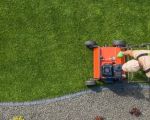
- 1. Understanding Lawn Runoff and Its Impact
- 2. Common Causes of Lawn Runoff During Heavy Rainfall
- 3. Effective Methods to Prevent Lawn Runoff
- 4. Installing Drainage Systems and Erosion Control Techniques
- 5. Real-World Examples and Lessons Learned
- 6. When to Seek Professional Lawn Care Services
1. Understanding Lawn Runoff and Its Impact
Lawn runoff occurs when excess rainwater flows off the surface of your lawn instead of soaking into the soil. This phenomenon is especially common during heavy rainfall, leading to several problems such as soil erosion, nutrient loss, and damage to your landscaping. Understanding the dynamics of lawn runoff is the first step in managing and preventing it effectively. When water flows rapidly over your lawn, it can carry away valuable topsoil and fertilizers, which in turn affects plant health and water quality in nearby streams or drainage systems.
1.1 Why Preventing Runoff Matters
Preventing lawn runoff is essential not only for maintaining a healthy lawn but also for environmental reasons. Runoff often carries pollutants like pesticides, fertilizers, and sediments into local waterways, contributing to pollution. Moreover, uncontrolled runoff can cause flooding issues around your home or neighborhood, increasing maintenance costs and affecting the stability of your garden.
1.2 The Role of Soil and Terrain
The soil composition and landscape slope play critical roles in runoff. Compacted or clay-heavy soils reduce water absorption, while steep slopes accelerate water flow. By improving soil quality and addressing the terrain, you can significantly reduce the risk of runoff during heavy rainfall.
2. Common Causes of Lawn Runoff During Heavy Rainfall
Several factors contribute to lawn runoff during storms, and recognizing these can help tailor effective prevention strategies.
2.1 Soil Compaction
Frequent foot traffic, heavy machinery, or natural soil settling can compact the soil, reducing its porosity. This means water can't penetrate effectively, leading to more surface runoff.
2.2 Poor Lawn Grading
If your lawn slopes unevenly toward your home or hardscape areas, water tends to pool or rush off without seeping in. Proper grading directs water away from vulnerable spots and encourages absorption.
2.3 Lack of Vegetation Cover
Lawns with sparse grass or bare patches have less root structure to hold soil in place and absorb water, increasing runoff and erosion risks.
3. Effective Methods to Prevent Lawn Runoff
Implementing practical solutions can help you manage and prevent runoff, keeping your lawn lush and protected even after heavy rains.
3.1 Aerate and Improve Soil Health
Aeration involves perforating the soil to allow air, water, and nutrients to penetrate deeper. This reduces compaction and enhances water absorption. Combining aeration with organic compost can improve soil structure and promote healthier grass growth.
3.2 Optimize Lawn Grading
Ensure your lawn has a gentle slope away from your house and critical structures. This natural grading helps channel water toward safe drainage points and prevents pooling.
3.3 Increase Vegetative Coverage
Planting dense grass or ground covers increases root mass, which anchors soil and absorbs rainwater. Consider drought-resistant and deep-rooted grass species that thrive in your climate.
3.4 Use Mulch and Plant Native Plants
Applying mulch around plants and garden beds reduces surface runoff by improving water retention. Native plants, adapted to local rainfall patterns, provide effective erosion control.
4. Installing Drainage Systems and Erosion Control Techniques
When natural methods aren't sufficient, installing specialized drainage and erosion control systems can be vital.
4.1 French Drains and Swales
French drains are trenches filled with gravel and a perforated pipe that redirects water away from the lawn. Swales, shallow channels lined with vegetation, slow down and divert runoff safely.
4.2 Rain Gardens and Bioswales
Rain gardens are landscaped areas designed to capture and absorb runoff using water-tolerant plants. Bioswales combine these features with engineered slopes to improve water filtration and reduce erosion.
4.3 Retaining Walls and Terracing
For steep lawns, terracing and retaining walls reduce slope length and soil displacement, effectively controlling runoff velocity and erosion.
5. Real-World Examples and Lessons Learned
A homeowner in Oregon shared how recurring heavy rains led to soil erosion and pooling water near their foundation. By aerating their lawn, planting native grasses, and installing a French drain, they dramatically reduced runoff problems. This combination of natural and engineered solutions balanced cost and effectiveness.
Similarly, a community in Florida tackled runoff issues by creating rain gardens in public spaces. This initiative not only prevented flooding but also beautified the neighborhood, showing how thoughtful planning benefits both environment and residents.
6. When to Seek Professional Lawn Care Services
While many runoff prevention methods can be done DIY, complex issues like severe erosion, persistent flooding, or soil contamination often require professional help. Lawn Care Services offer expert assessment and tailored solutions, including soil testing, proper grading, and installation of advanced drainage systems.
If you're struggling with lawn runoff during heavy rainfall or want to ensure your landscape remains resilient, consulting professionals can save time and prevent costly damage. For comprehensive advice and quality products tailored to your lawn’s needs, consider exploring Lawn Care Services.








